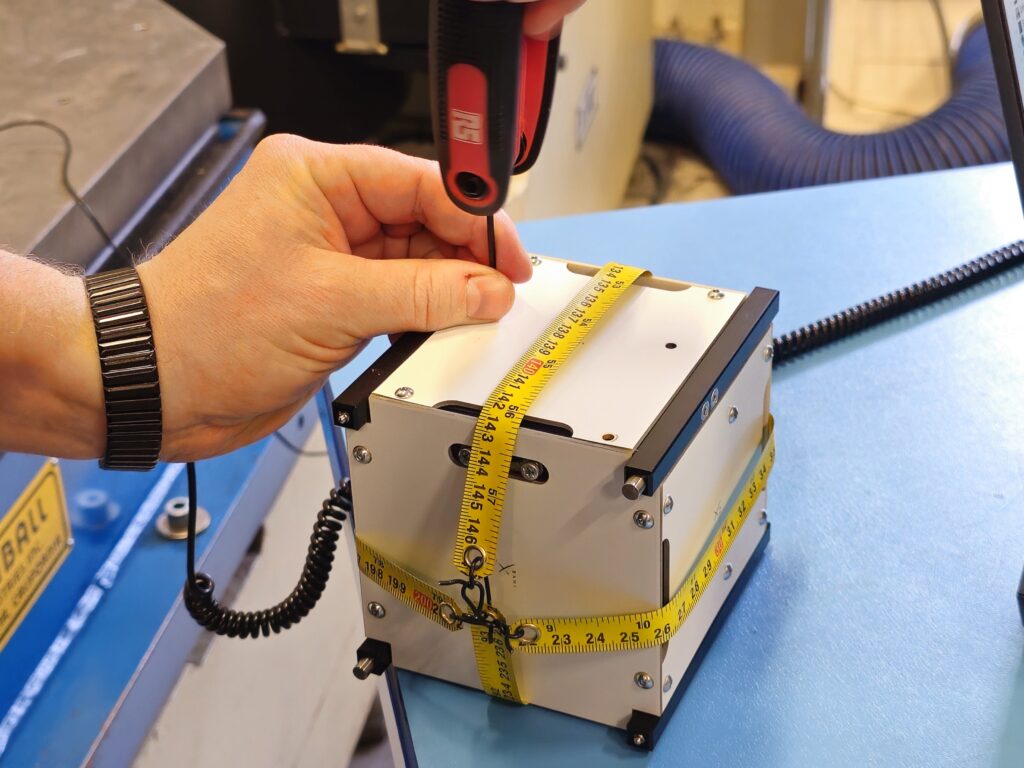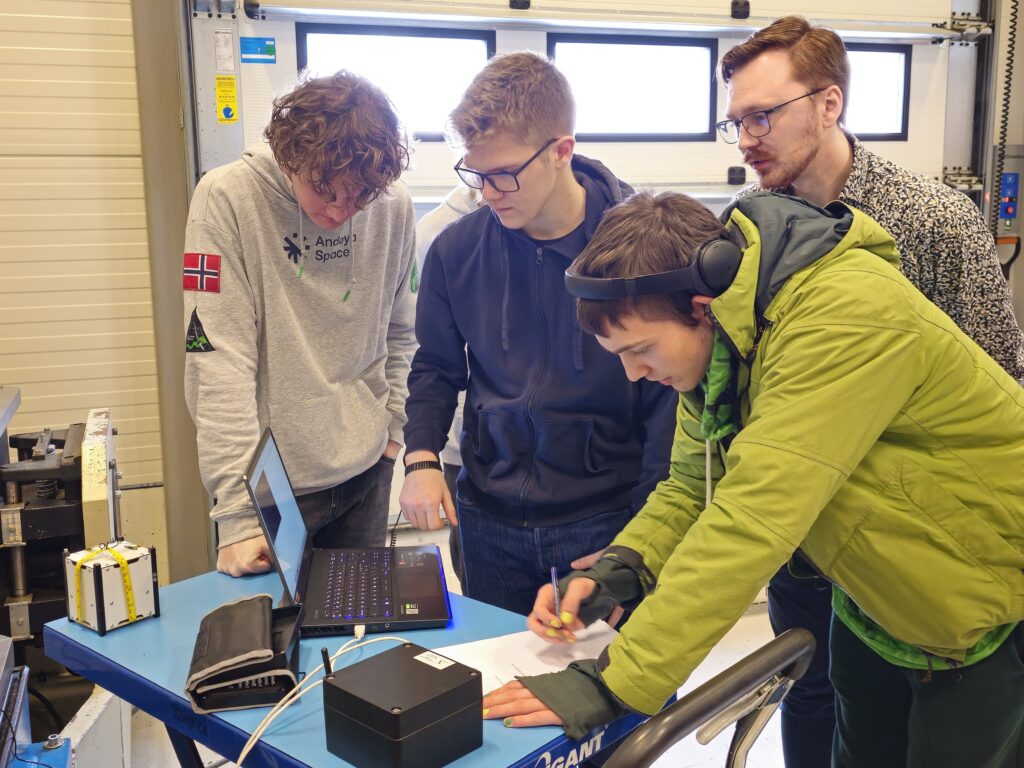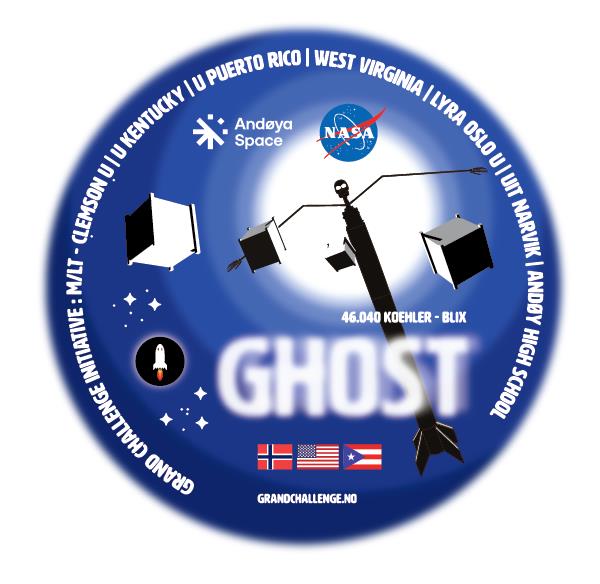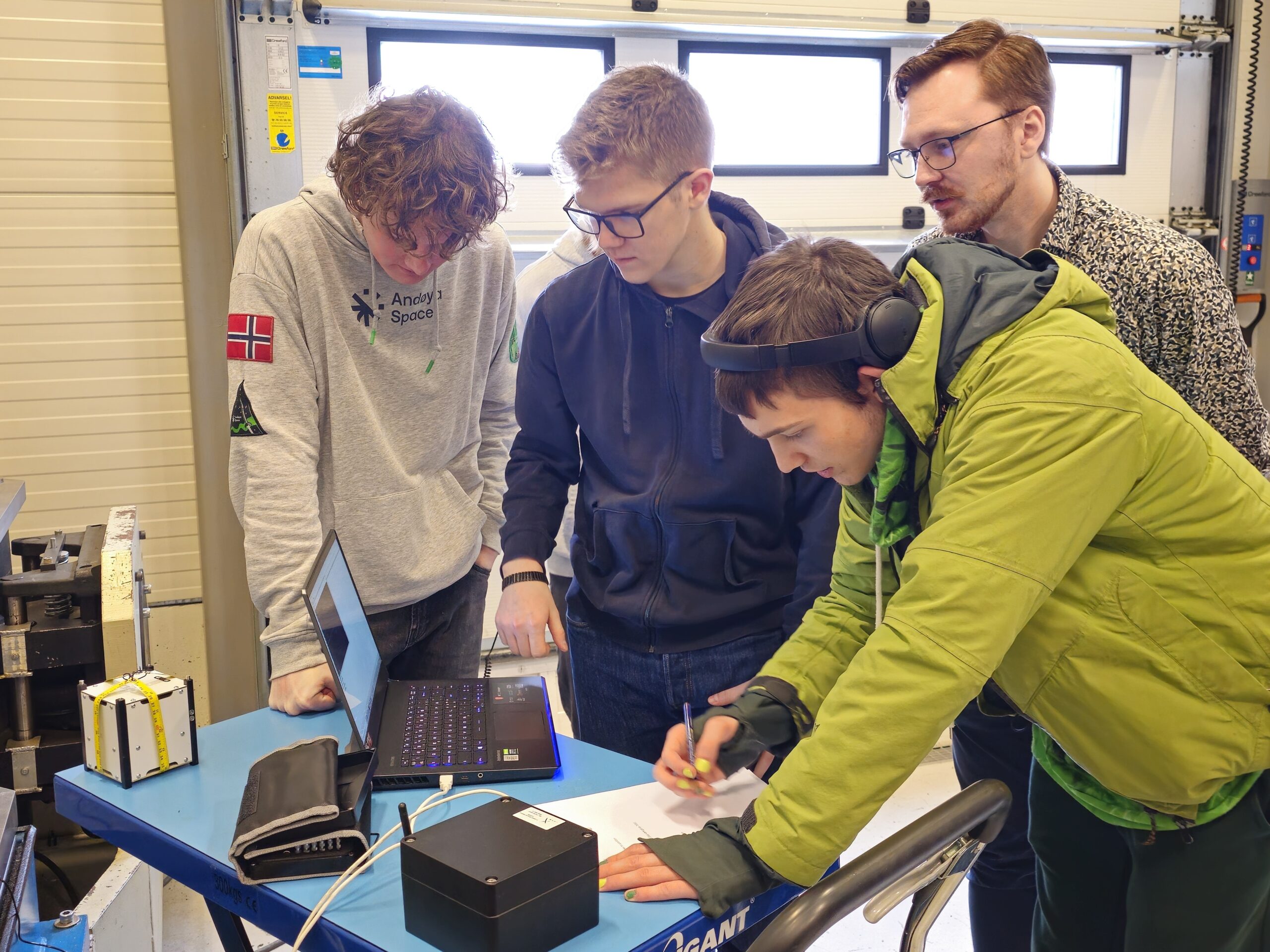Students from Andøy High School are taking part in a student-oriented research rocket called GHOST. The rocket will be launched from Andøya Space in November and the students have now completed an important milestone towards launch.
GHOST is a student-oriented research rocket that will be launched from Andøya in November this year. It is a two-stage rocket that will fly up to an altitude of 248 kilometers, and is part of a larger NASA research campaign. In other words, it is a full-scale research rocket in a full-scale scientific research campaign, but the technological experiments on board are built by students from Norway, the United States and Puerto Rico.
High school students taking part in the project
– What is extra special about GHOST is that for the first time, high school students are taking part in the project, usually only students at university level are included, says Kolbjørn Blix, head of the Sub-Orbital business division in Andøya Space. – This time we wanted to invest a little extra in high school students to show them what they can experience if they choose this career path.
Their participation in the project is supported by both Andøya Space and Nordland County Council.
Mini-Satellite
The Norwegian contributions to the scientific experiments that will be launched with GHOST will come in the form of so-called CubeSats.
A CubeSat is a small satellite with dimensions of 10 x 10 x 10 centimeters. The students have been given a set that they then finish building themselves. Their satellite is ejected from the rocket on the journey and is gathering data on the way down.

– GHOST is a sub-orbital rocket, which means that it will not orbit the Earth, explains Blix. – But it will be out there in space for a few minutes before it comes down again. For the students, GHOST represents a huge learning potential. They get the experience with both real research rockets and satellites, in a project that takes less time than if they were to build a satellite that would end up in an actual orbit around the Earth.
The Norwegian contributions
The high school students have done some research in advance to come up with the experiment for their mini-satellite.
– We will send up a small camera that will take pictures in space, says Space Technology student Jonatan Lynum. – It will be exciting to see if it works.
But before the contribution from Andøy High School can become part of the rocket, it must go through an important vibration test.
– The vibration test simulates the vibrations the rocket experiences on its journey up into the atmosphere, and is done to ensure that the payload survives the launch, says Blix.
In addition to the mini-satellite from Andøy High School, there will be three other satellites representing the Norwegian contribution. The other experiments will be carried out by students from the University of Oslo and UiT The Arctic University of Norway, campus Narvik. These satellites will also go through out vibration tests later this spring.
Ready for the next step
The students from Andøy High School are very pleased to have taken part in their first vibration test.

– It went very well, everything seemed to work as it should, says one of the students, Kristian Haslestad Egenes. – Our satellite seemed to survive the test, so now it’s ready.
In July, a small group of students will travel to NASA in the United States together with personnel from Andøya Space to integrate the payload, i.e. the technological experiments, with the rest of the rocket, so that everything is ready for launch in November.
Part of the Grand Challenge Initiative (GCI)
The work on GHOST started already in 2020, and such projects take time to put in place. GHOST is part of a larger research program called Grand Challenge M/LT, which is a Norwegian initiative with participation from the USA, Germany and Sweden, among others. Rockets, balloons and ground-based instruments from a number of places around the world are used.
– Traditionally, researchers have worked by themselves to get research rockets in place. The idea behind the Grand Challenge is to gather several small research projects into one large, where all participants share their research data with all the other participants, and thus get access to more research data for the same cost, says Blix.
The Grand Challenge Initiative is a large-scale international collaboration aimed at advances in specific, fundamental questions in space and earth sciences, and has consisted of various sub-projects.
Project Cusp is designed to advance the common understanding of the cusp region’s space physics through coordinated experimental and theoretical research using ground-based instruments, modeling, sounding rocket surveys, and satellite-based instruments.
Project Mesosphere / Lower Thermosphere (M/LT) is designed to study the region with new techniques in both rockets and remote sensing instruments. Recent theoretical and modelling developments allow the study of dynamic processes at a wide range of scales – including the potential impact of small-scale processes on a global scale.
It had to be GHOST
– GHOST is part of the latter, M/LT, and is student rocket number two of this type. It started with the student rocket G-Chaser, which was launched from Andøya in 2019, says Blix.
The acronym GHOST stands for Grand Challenge Initiative – Project Mesosphere / Lower Thermosphere. And even though the acronyms do not quite match the abbreviation, Blix was in no doubt about what this student rocket should be called.
– A project of this type takes many years to put in place. When G-Chaser was over, few people believed that we would achieve another similar project, says Blix. – But when it turned out that it was possible with another student-oriented research rocket, the project came back as a ghost that no one had expected to see. That’s why it had to be GHOST.


